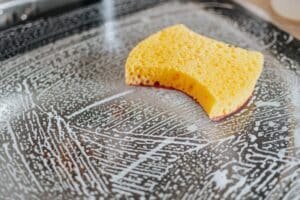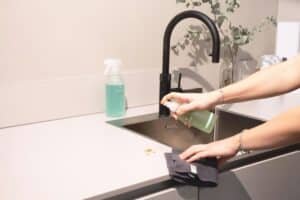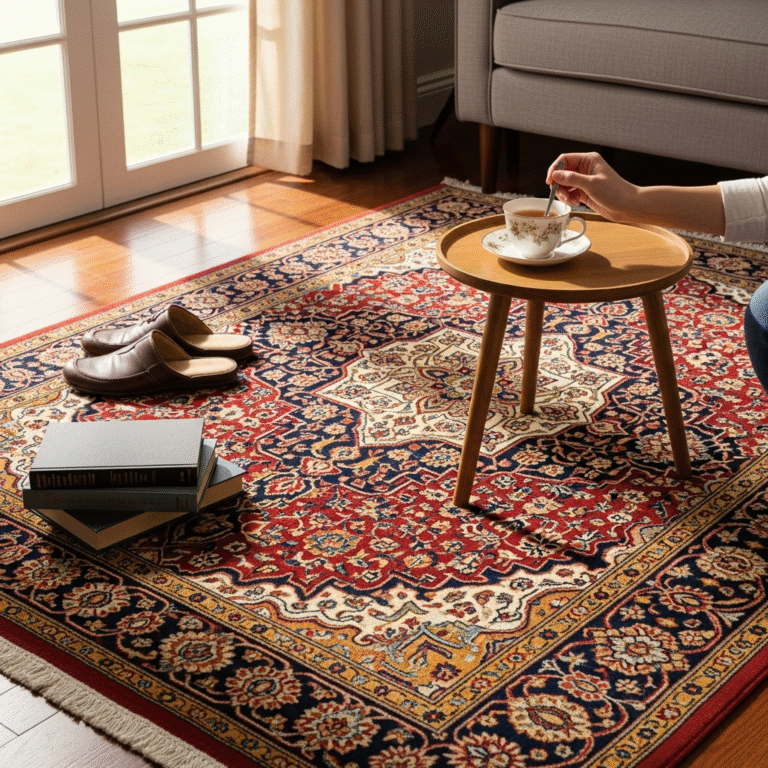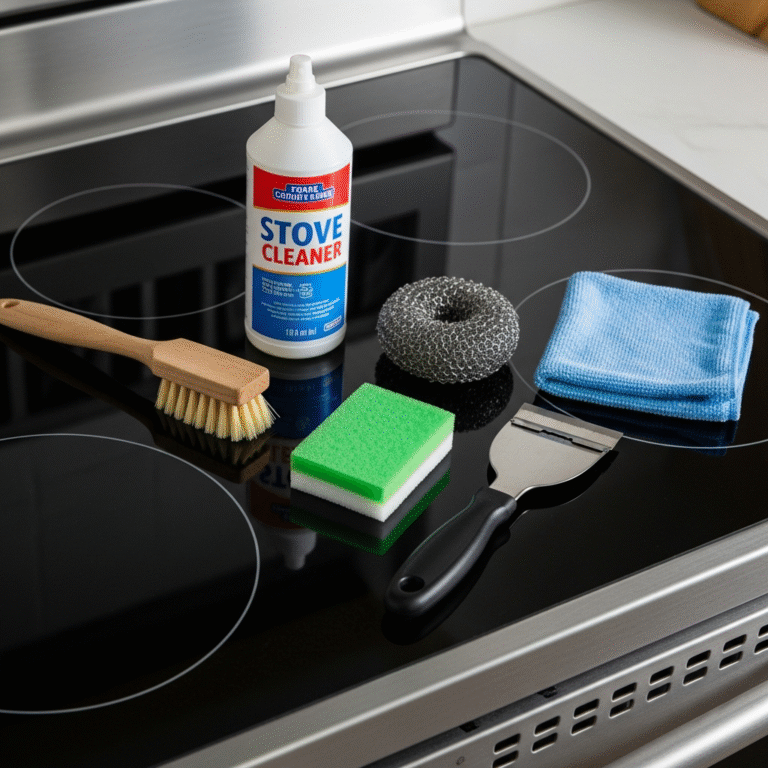Keeping a clean home isn’t just about appearance—it’s also about maintaining a healthy environment. Many areas in your home are breeding grounds for bacteria and viruses. Regular cleaning and disinfecting of these hidden germ hotspots can prevent illness and keep your space truly clean. Here are the top places germ hotspots thrive and how to clean them effectively.
1. Kitchen Sponge & Sink
The kitchen sponge is one of the dirtiest items in your home. It absorbs moisture, food particles, and bacteria, making it a perfect breeding ground for germ hotspots . The sink, especially around the drain, also harbors harmful bacteria like E. coli and salmonella. Without regular sanitization, these germ hotspots can transfer bacteria to your dishes, utensils, and food preparation surfaces, increasing the risk of contamination.
To keep your kitchen hygienic, sponges should be replaced every one to two weeks to prevent excessive bacterial buildup. You can sanitize sponges daily by microwaving a damp sponge for one to two minutes, which effectively kills germs. Additionally, washing the sink with a disinfectant or hot, soapy water every day will help eliminate bacteria and maintain a germ-free environment in one of the most frequently used areas of the home.
Neglecting to clean these areas properly can lead to the spread of harmful bacteria across kitchen surfaces. Using disposable or antibacterial sponges can further reduce contamination risks. Consider also using separate sponges for different cleaning tasks to prevent cross-contamination between surfaces like countertops, dishes, and cutting boards.

2. Doorknobs & Light Switches
High-touch surfaces like doorknobs, light switches, and cabinet handles collect bacteria and germs from multiple hands throughout the day. These germ hotspots are often overlooked during regular cleaning routines, yet they play a major role in the spread of illnesses such as the flu and the common cold. With frequent contact, bacteria and viruses can survive on these surfaces for hours or even days.
To keep these surfaces clean, it’s essential to disinfect them daily using antibacterial wipes or a disinfectant spray. Focus on areas that receive the most traffic, such as bathroom and kitchen switches, as well as frequently used doorknobs. A quick wipe may remove visible grime, but a deeper disinfecting routine ensures harmful germs are completely eliminated.
In addition to disinfecting, using a microfiber cloth to first remove dust and dirt can improve the effectiveness of cleaning products. Encouraging household members to wash their hands frequently can also reduce the transfer of germs onto these high-contact surfaces. Regular maintenance can make a significant difference in maintaining a hygienic living space.
3. Remote Controls & Electronics
TV remotes, game controllers, and smartphones are handled by multiple people, making them germ hotspots for bacteria and viruses. These electronic devices often harbor more germs than toilet seats due to frequent use and limited cleaning. Without regular disinfecting, germs from unwashed hands, food residue, and even sneezing can accumulate on their surfaces.
To clean these devices effectively, use a disinfectant wipe to sanitize remotes and controllers daily. Pay close attention to crevices where dirt and bacteria can hide. For smartphones and tablets, use a microfiber cloth with a small amount of isopropyl alcohol to safely disinfect without damaging sensitive screens or components.
Excessive moisture can damage electronics, so avoid using too much liquid when cleaning. If possible, consider using a protective case that can be easily wiped down. Establishing a habit of cleaning electronics frequently will help prevent the spread of germs and maintain a healthier home environment.
4. Toothbrush Holders & Bathroom Faucets
Moist environments like the bathroom encourage bacterial growth. The toothbrush holder and faucet handles are among the most overlooked germ hotspots. Toothbrushes sit in holders that collect water residue and bacteria, while faucet handles accumulate germs from dirty hands before and after washing.
To maintain hygiene, the toothbrush holder should be washed in hot, soapy water at least once a week to remove buildup. In addition, toothbrushes should be stored in an upright position to allow proper drying and to prevent bacterial growth. Replacing toothbrushes every few months is also essential for oral hygiene and reducing bacterial exposure.
Bathroom faucets require regular disinfecting since they are touched before and after handwashing. Using a cleaning spray or antibacterial wipes to sanitize faucet handles daily can help minimize germ accumulation. Proper cleaning in the bathroom is crucial for preventing the spread of bacteria, especially in shared living spaces.

5. Pillows & Bedding
Your bed can accumulate dust mites, sweat, and dead skin cells, which can trigger allergies and skin issues. Many people focus on washing sheets but forget that pillows and mattresses also harbor allergens and bacteria. Without regular cleaning, these hidden germ hotspots can impact respiratory health and sleep quality.
To maintain cleanliness, pillowcases and sheets should be washed weekly in hot water to eliminate dust mites and bacteria. Using a mattress protector can help prevent dirt buildup, but vacuuming and airing out the mattress monthly is also recommended. Dust mites thrive in warm, humid environments, so keeping the bedroom well-ventilated can help reduce their presence.
Pillows should be replaced every one to two years, as they can become a breeding ground for bacteria over time. If possible, washing pillows in hot water every few months can help maintain a fresh and hygienic sleeping environment. A clean bed contributes to better overall health and well-being.
6. Refrigerator Handles & Drawer Pulls
The fridge handle is touched multiple times daily, often before or after handling raw food. Drawer pulls in the kitchen and bathroom also accumulate bacteria over time. These germ hotspots are frequently used but often neglected when it comes to cleaning, allowing germs to spread easily.
To prevent contamination, refrigerator handles should be wiped down daily with a disinfectant spray or wipe. Kitchen drawers and cabinets also require regular attention, as food particles and grease can create an environment for bacteria to thrive. Cleaning the inside of drawers at least once a month can help prevent mold and bacteria buildup.
Taking a few minutes each day to disinfect these areas can significantly reduce the spread of germs. Encouraging proper food handling and handwashing habits can further minimize contamination risks in the kitchen. Regular maintenance keeps your home cleaner and safer.

7. Pet Bowls & Toys
Pet bowls and toys often harbor bacteria, yeast, and mold, which can affect both pets and humans. Without regular washing, these items can become germ hotspots, leading to health issues for both your furry friends and your family.
Pet bowls should be washed daily with hot, soapy water to remove bacteria and food residue. Rubber and plastic pet toys should be sanitized weekly by soaking them in a vinegar solution or washing them with mild soap. Any toys that show signs of wear or mold should be replaced to ensure pet safety.
By keeping pet items clean, you reduce the risk of spreading bacteria throughout your home. A clean environment benefits everyone, including your pets, by ensuring a healthier living space.
Final Thoughts
Maintaining a clean home goes beyond just wiping down visible dirt. By focusing on these hidden germ hotspots and regularly disinfecting them, you can create a healthier environment for you and your family. A professional cleaning service can also help ensure your home is germ-free and spotless.
Looking for expert cleaning services? Contact Toronto Shine Cleaning today for a deep-clean that eliminates hidden germs in your home!



















